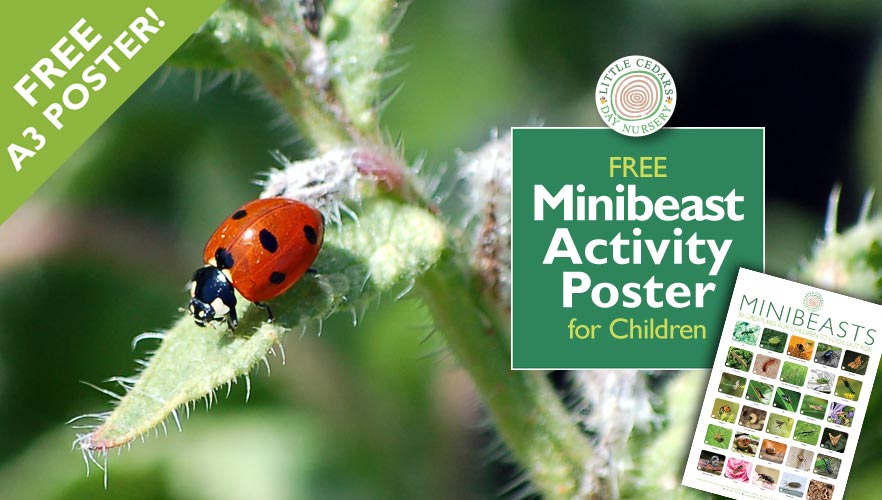
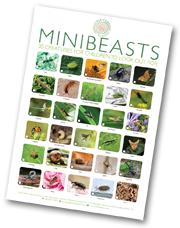 Today’s minibeast-spotting activity is the third in a series of nature-based children’s activities and, like the others, comes with a free poster. As with the bird-spotting activity and butterfly-spotting poster, children can display this new minibeasts poster on their bedroom/nursery wall, or print it out for reference when they’re spotting minibeasts outdoors. This is another fun and educational nature-based activity and, as we know, spending time in nature is hugely beneficial to children, including the very young.
Today’s minibeast-spotting activity is the third in a series of nature-based children’s activities and, like the others, comes with a free poster. As with the bird-spotting activity and butterfly-spotting poster, children can display this new minibeasts poster on their bedroom/nursery wall, or print it out for reference when they’re spotting minibeasts outdoors. This is another fun and educational nature-based activity and, as we know, spending time in nature is hugely beneficial to children, including the very young.
The minibeasts poster will help children identify 30 critters that are commonly seen in gardens, country walks, city parks and anywhere there are flowers, plants, trees or soil. Children can explore, under supervision*, to see how many of the creatures they can discover. To help record this, there are tick boxes that children can use to mark which ones they’ve so far spotted. Why not see how many they can identify over the summer and autumn? The poster is sized at A3 but can also be printed out smaller, e.g. at A4. It can also be viewed large, on screen, for glorious colour and detail.
Free Minibeasts Poster
Download Instructions
Left- or right-click the large image above to view the high-resolution poster or download it to your hard drive. Once downloaded, you can view it on a screen (Acrobat Reader required) and zoom in for the best detail. If printing out, print using high-quality printing paper for the best results. Print at A3 (full size) or reduce to fit if you are printing smaller, e.g. at A4. Smaller print-outs may be useful for children to take outdoors as visual reference.
Minibeasts
Minibeasts are essentially small creatures and insects that are commonly found in gardens or around plants, flowers, trees, compost heaps and soil. Some, like bumble bees, hoverflies and ladybirds, can be seen in flight or visiting flowers and plants. Others, like twig caterpillars, are harder to spot because they really do look like twigs. Minibeasts like woodlice and beetles may be found around rotting leaves, compost heaps, rotting wood and perhaps living under flowerpots. Earthworms and grubs may also be lurking in places like compost heaps.
Be Kind
With all these creatures, children should be taught to be careful not to unduly disturb or harm them. They’re very delicate indeed, and children should avoid manhandling them, accidentally treading on them and suchlike. Respect and empathy towards other creatures are wonderful things to teach children, so supervising adults are encouraged to explain how the minibeasts are living beings, with their own feelings, desires and the right to live in peace. Indeed, instilling such beliefs into children will help them be more aware of the need to protect the environment and Planet Earth as a whole. This activity may also be a great way to introduce children to the joys of outdoor play and being close to nature.
A Fun & Educational Nature-Based Activity for Children
So, have fun and stay safe*. Many great lessons can be learned by seeing and learning from the natural world, so get out today with your little one(s) and see how many types of minibeast you can each spot. Perhaps take some photos on a smartphone too!
Little Cedars: a High-Quality Nursery & Preschool in Streatham SW16

 Ofsted rates Little Cedars as a good provider of early years education and childcare, so you know your baby, toddler or preschooler will be in safe hands. We’re a childcare nursery/preschool in Streatham, London SW16, and give under-fives the very best start in life in a kind, caring home-from-home environment. If you’d like us to bring out the very best in your child and give them a flying start before they reach school age, please get in touch:
Ofsted rates Little Cedars as a good provider of early years education and childcare, so you know your baby, toddler or preschooler will be in safe hands. We’re a childcare nursery/preschool in Streatham, London SW16, and give under-fives the very best start in life in a kind, caring home-from-home environment. If you’d like us to bring out the very best in your child and give them a flying start before they reach school age, please get in touch:
Our nursery is based in Streatham, close to Tooting Common and the A214. Our location means we may also be suited to families who require high-quality childcare in and around Tooting, Streatham Hill, Streatham Park, Streatham Common, Furzedown, Tooting Bec, Tooting Broadway, Balham, Norbury and Colliers Wood.
*Child Safety
Please be mindful of the possible dangers associated with playing outdoors. Children, especially the very young, should be accompanied and supervised by a responsible adult at all times. Vigilance should be shown around all dangers. These include, but are not limited to, things like stranger danger, bodies of water, trip hazards, possible drops in ground levels, things that can sting, possible toxins, poisonous plants and fungi, choking hazards, sharp objects, traffic, wildlife protecting their young, and so on. Risk assessments should be made on continually and it’s wise to educate children about all such risks. Learn more safety tips for outdoor play here.

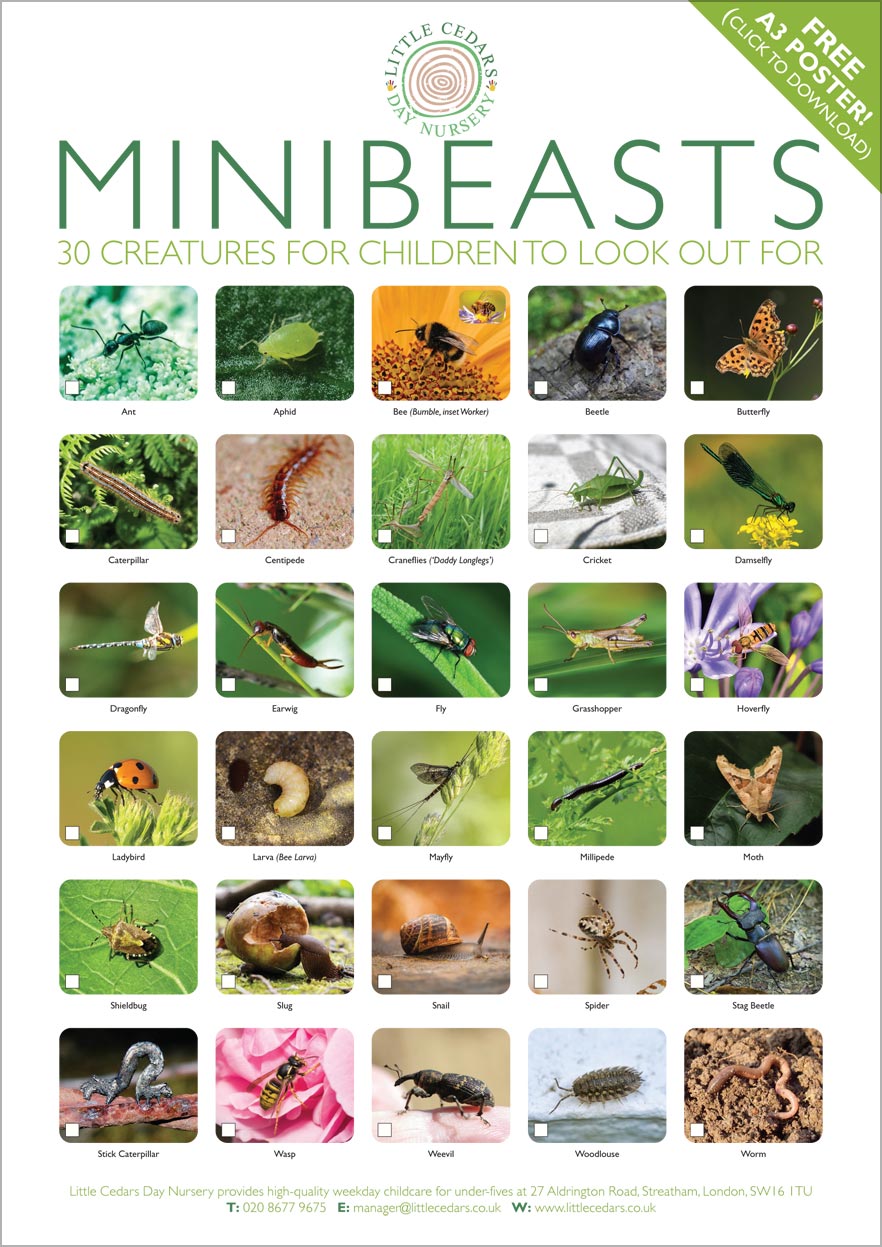
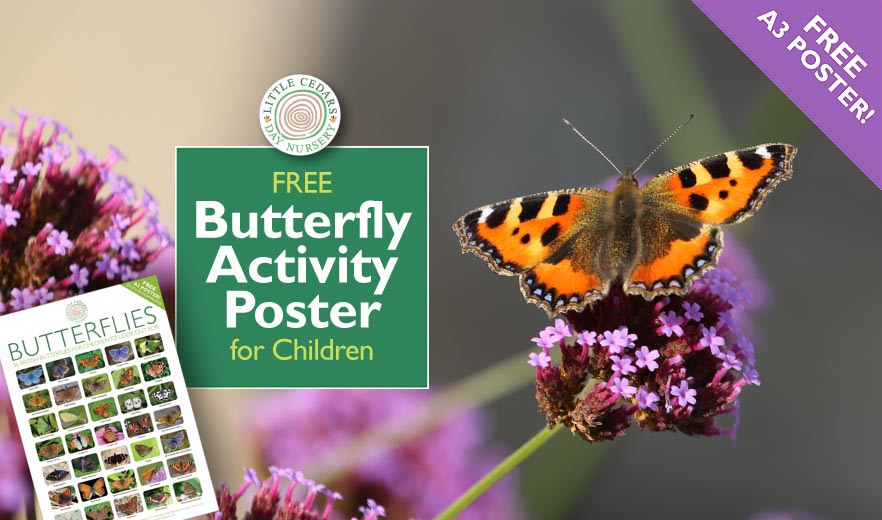
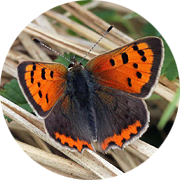 Following on from our
Following on from our 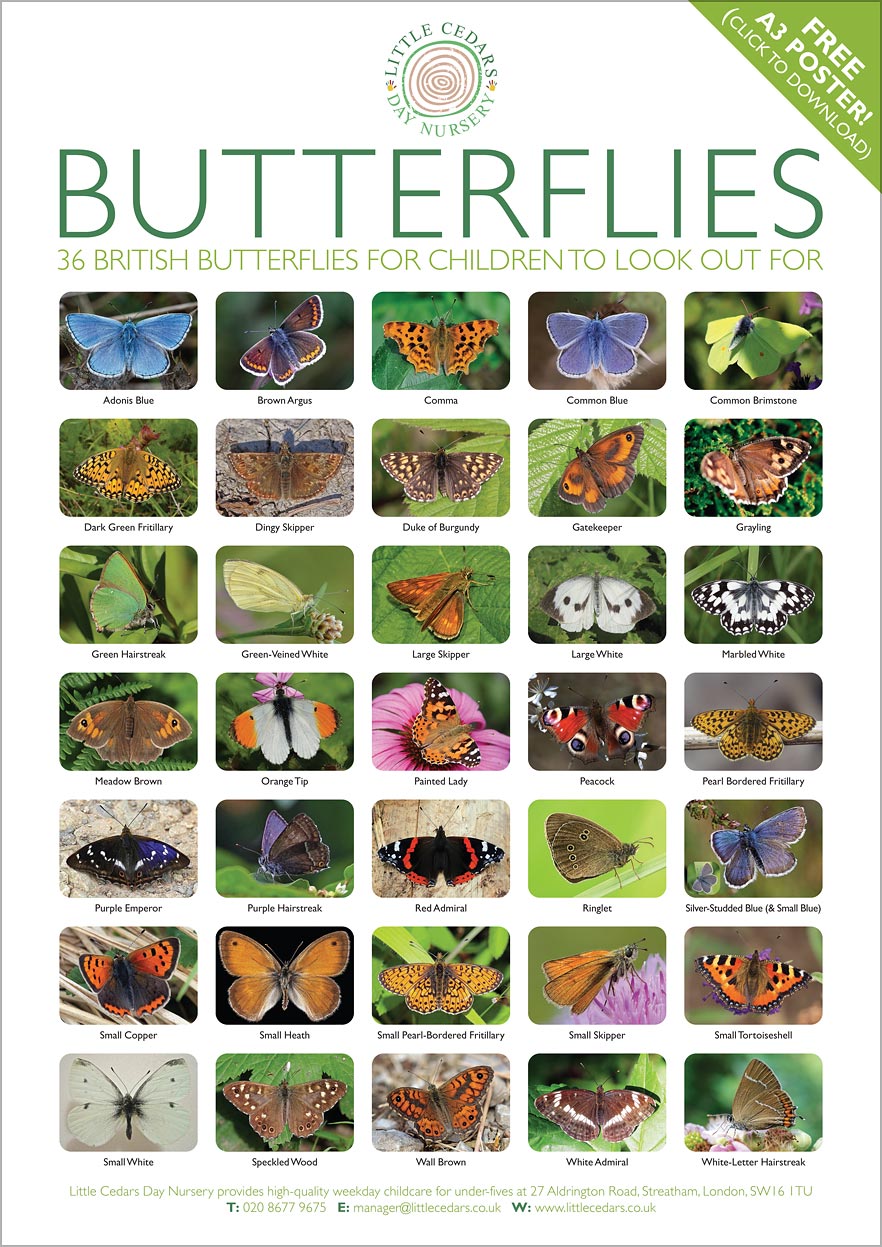
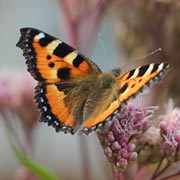 We must also add that children should be encouraged to ‘look but don’t touch’ as butterflies are very delicate creatures. Children should not try to touch or catch them — they are best left in peace as every one of them is a little individual that simply wants to go about his or her day. They’re wonderful to watch, though, and our free poster should help children and adults identify many of the different types. Perhaps see how many different species can be spotted over the course of a year. Take photos too, and compare them with friends! Some butterflies visit gardens, floral window boxes and parks while others may only be found in wilder locations in the countryside. This activity is therefore a great excuse for families to get out and explore The Great Outdoors! Recording the date and location of each butterfly spotted will also help families work out where the best butterfly-spotting locations are for next time.
We must also add that children should be encouraged to ‘look but don’t touch’ as butterflies are very delicate creatures. Children should not try to touch or catch them — they are best left in peace as every one of them is a little individual that simply wants to go about his or her day. They’re wonderful to watch, though, and our free poster should help children and adults identify many of the different types. Perhaps see how many different species can be spotted over the course of a year. Take photos too, and compare them with friends! Some butterflies visit gardens, floral window boxes and parks while others may only be found in wilder locations in the countryside. This activity is therefore a great excuse for families to get out and explore The Great Outdoors! Recording the date and location of each butterfly spotted will also help families work out where the best butterfly-spotting locations are for next time. With that in mind, why not take this activity a step further and get involved in the UK’s annual Big Butterfly Count? For 2024, it takes place between Friday the 12th of July and Sunday the 4th of August, which is when most butterflies are at their adult stage. All it takes is 15 minutes and children will love being little ‘citizen scientists’! The activity can be done in gardens, parks, school grounds or out in the countryside. Taking part will give children a real opportunity to help with butterfly conservation.
With that in mind, why not take this activity a step further and get involved in the UK’s annual Big Butterfly Count? For 2024, it takes place between Friday the 12th of July and Sunday the 4th of August, which is when most butterflies are at their adult stage. All it takes is 15 minutes and children will love being little ‘citizen scientists’! The activity can be done in gardens, parks, school grounds or out in the countryside. Taking part will give children a real opportunity to help with butterfly conservation.